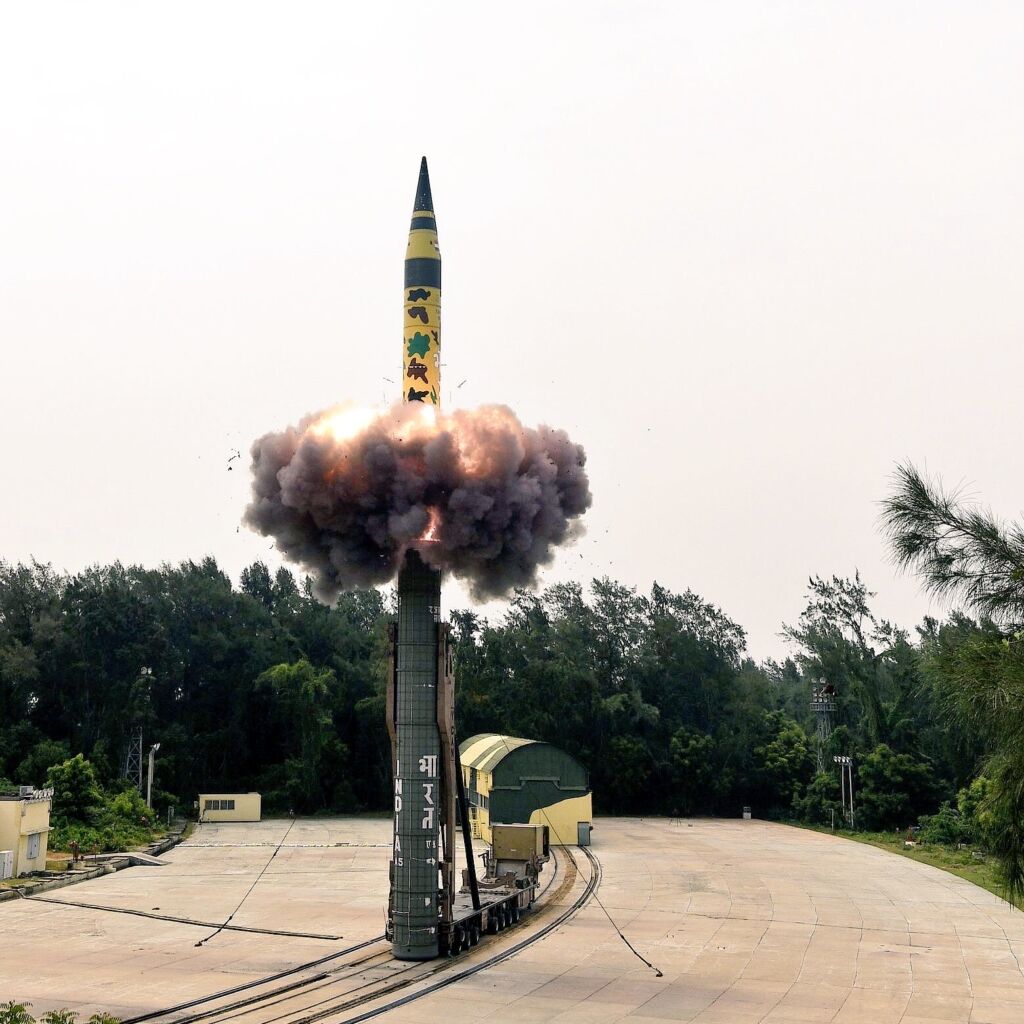SOURCE: RAUNAK KUNDE / NEWS BEAT / IDRW.ORG


The Defence Research and Development Organisation (DRDO) has embarked on an ambitious project to develop a conventional, non-nuclear variant of the Agni-5 intercontinental ballistic missile (ICBM), tailored specifically for the Indian Air Force (IAF).
According to sources cited by idrw.org, this variant, equipped with a massive 7.5 to 8-tonne warhead, will feature two configurations: an airburst warhead for widespread surface damage and a bunker buster warhead designed to penetrate and destroy underground facilities, such as command and control centers or nuclear weapon storage sites. With a reduced range of 2,500 km to accommodate the heavier payload, the missile is engineered to evade ballistic missile defence (BMD) systems, making it a formidable weapon for targeting large-scale and fortified enemy infrastructure. This development addresses the IAF’s lack of a strategic bomber capable of delivering heavy ordnance like the U.S. GBU-57 Massive Ordnance Penetrator (MOP), positioning the Agni-5 as a critical asset in India’s strategic arsenal.
The IAF’s need for a bunker buster capability stems from its lack of a strategic bomber, such as the U.S. B-2 Spirit or B-52 Stratofortress, capable of delivering heavy ordnance like the 13.6-tonne GBU-57 MOP, which can penetrate up to 60 meters of reinforced concrete. The GBU-57, used recently by the U.S. against Iran’s Fordo nuclear facility, highlighted the importance of deep-penetration weapons for neutralizing fortified targets. India’s Su-30MKI and Rafale jets, while versatile, lack the payload capacity and stealth to deliver such heavy bombs over long distances in contested airspace. The DRDO’s decision to adapt the Agni-5 ICBM, originally designed for nuclear deterrence with a range exceeding 5,000 km, into a conventional missile with a 7.5 to 8-tonne warhead addresses this gap, providing the IAF with a high-impact, long-range strike capability.
The conventional Agni-5 variant, with its reduced range of 2,500 km, is optimized for regional threats, particularly in the Indo-Pacific, where China’s J-20 stealth jets, DF-21D anti-ship ballistic missiles, and fortified underground facilities pose significant challenges. Pakistan’s suspected nuclear storage sites, such as those rumored at Kirana Hills, also necessitate a capability to target deeply buried infrastructure. The missile’s ability to evade BMD systems, leveraging advanced guidance and decoy technologies tested in the nuclear-capable Agni-5’s Mission Divyastra in March 2024, ensures it can penetrate defended airspace, making it a “go-to” weapon for strategic strikes.
Airburst Warhead: This configuration is engineered to detonate above the target, generating a powerful shockwave and dispersing high-velocity fragments to maximize damage over a large surface area. A single Agni-5 with an airburst warhead could devastate an enemy airbase, destroying runways, aircraft, radar systems, and command centers. For instance, during Operation Sindoor in May 2025, the IAF demonstrated its ability to neutralize Pakistani airbases like Sargodha and Rafiqui using BrahMos and SCALP missiles. The Agni-5’s airburst variant, with its 7.5 to 8-tonne payload, would amplify this capability, potentially crippling an entire airbase with one missile, enhancing India’s ability to achieve air superiority in a conflict.
Bunker Buster Warhead: Designed for deep-penetration strikes, this warhead can burrow 80–100 meters underground before detonating, making it ideal for targeting fortified command and control centers, missile silos, or nuclear storage facilities. The warhead’s precision guidance, incorporating ring laser gyroscopes and NavIC/GPS augmentation, ensures pinpoint accuracy, critical for neutralizing high-value subterranean targets. This capability draws inspiration from global developments, such as the U.S. GBU-57’s use against Iran, but adapts it for missile-based delivery, offering greater range and BMD evasion compared to air-dropped bombs.
The Agni-5’s three-stage, solid-fuel design, combined with its canisterized, road-mobile Transport-cum-Tilting Vehicle-5 (TCT-5) launcher, ensures rapid deployment and operational flexibility. The missile’s ability to carry heavy payloads while maintaining a circular error probable (CEP) of less than 10 meters enhances its effectiveness against both surface and underground targets.
The Agni-5 bunker buster variant will transform the IAF’s strategic strike capabilities, enabling it to neutralize critical enemy infrastructure without relying on air-dropped munitions. A single missile with an airburst warhead could disable an airbase, as envisioned for targets like Pakistan’s Sargodha or China’s Hotan, while the bunker buster warhead could target deeply buried facilities, such as those rumored at Kirana Hills or gravitons. This capability addresses a critical gap in the IAF’s arsenal, providing a long-range, high-impact option that rivals strategic bombers.
NOTE: Article cannot be reproduced without written permission of idrw.org in any form even for YouTube Videos to avoid Copy right strikes. Websites doing illegal reproductions will get DMCA and Legal Notices.